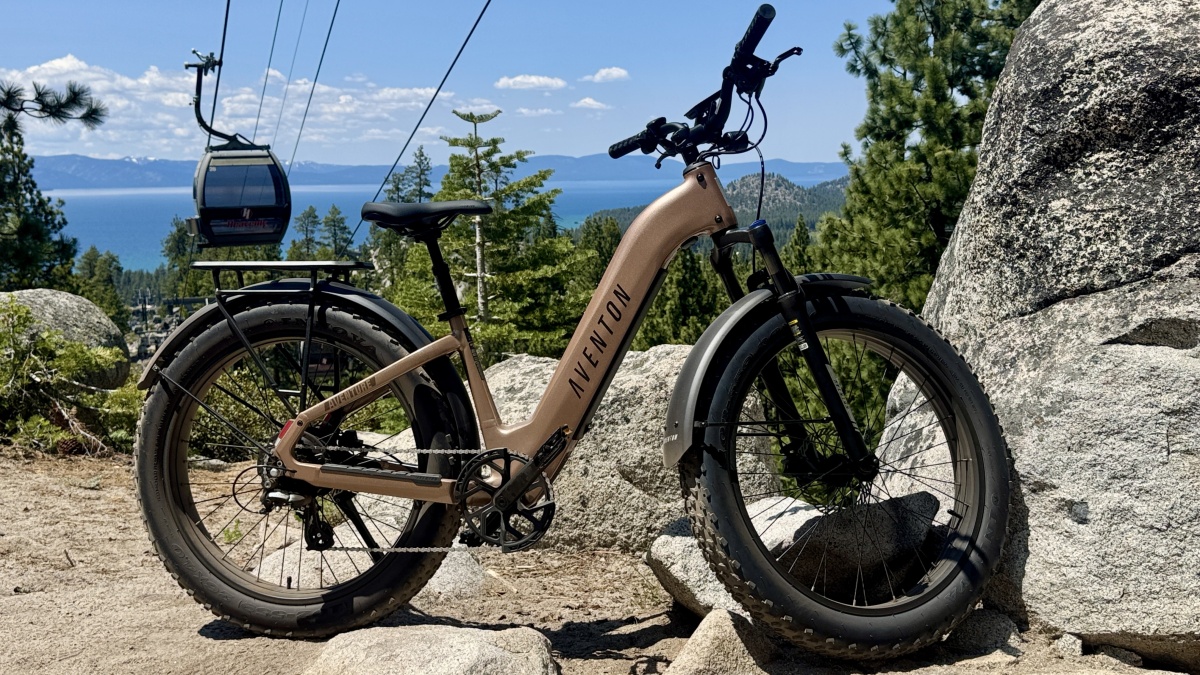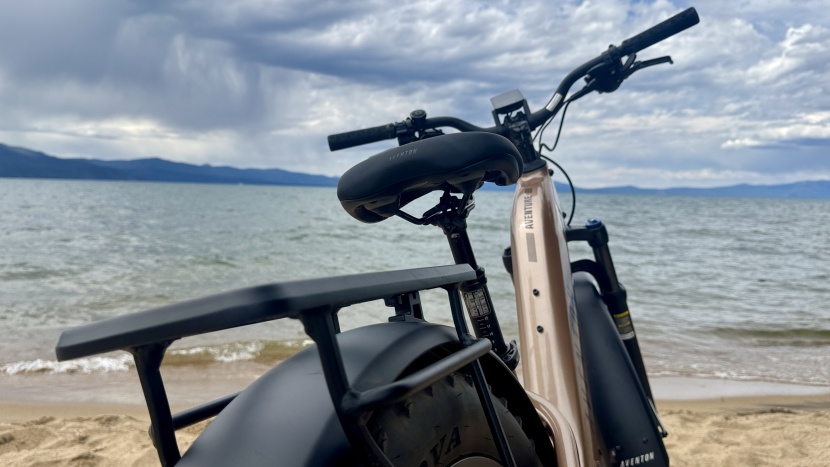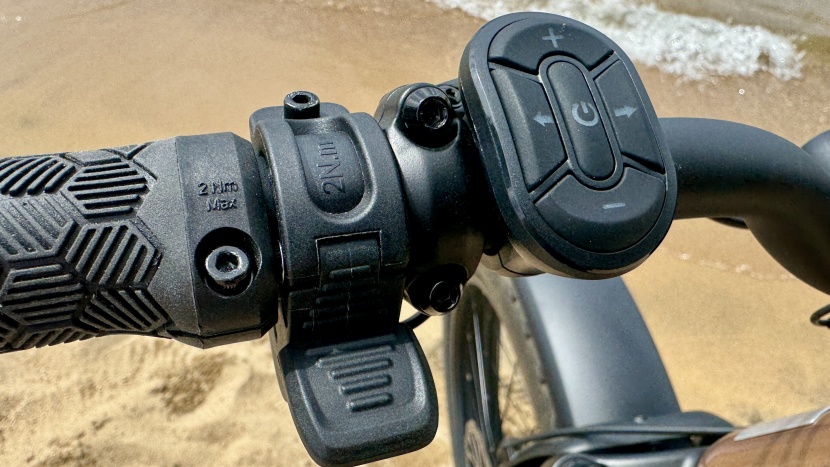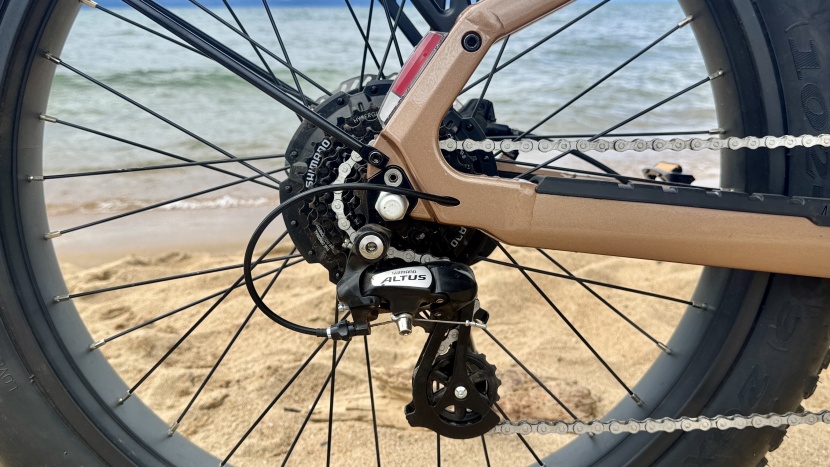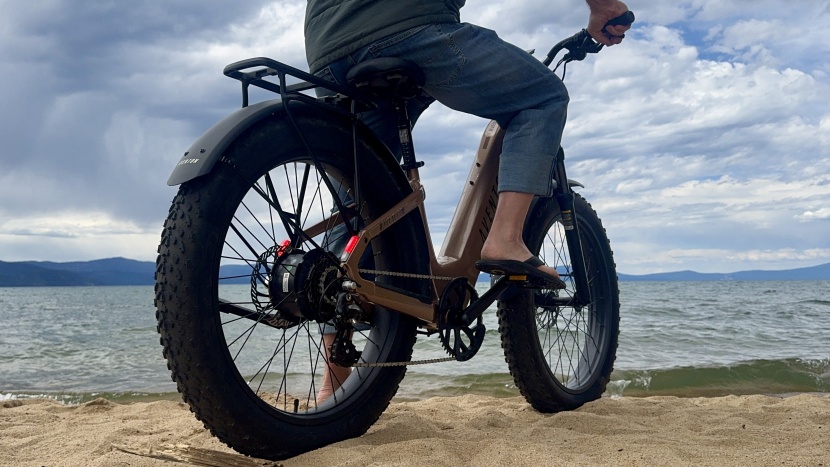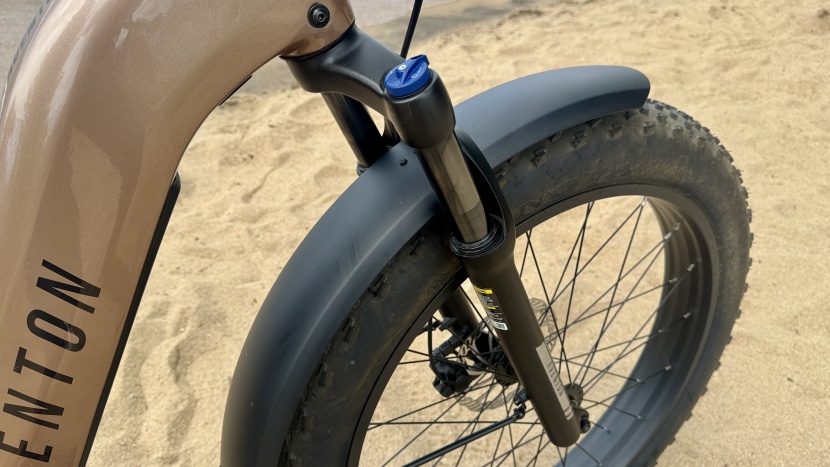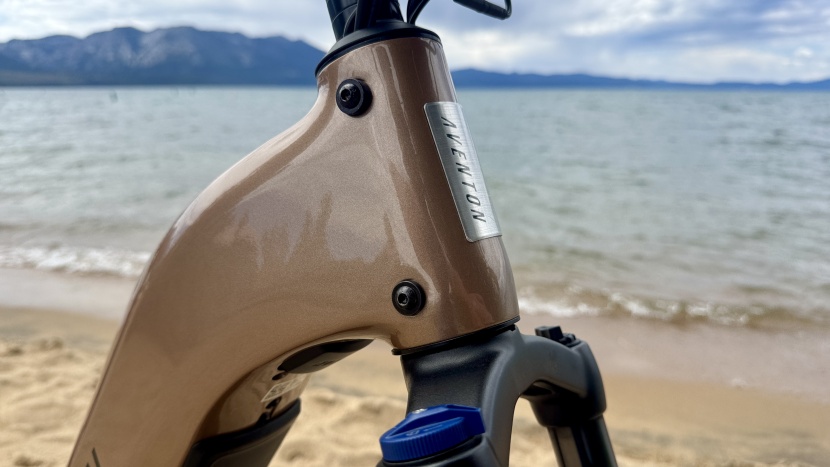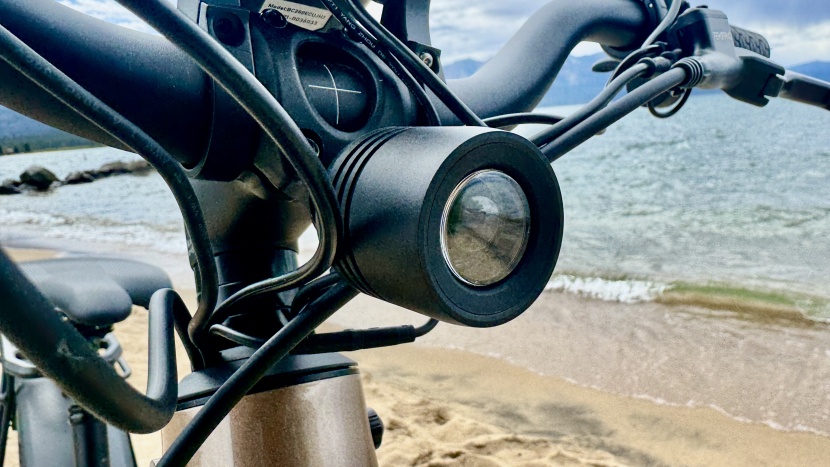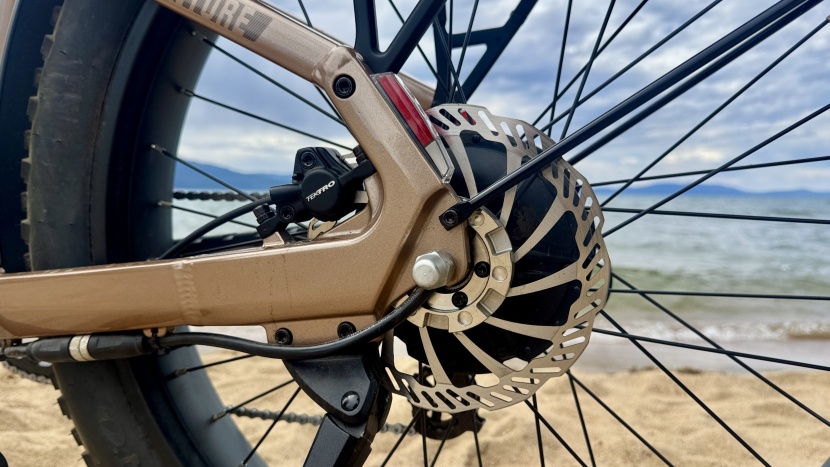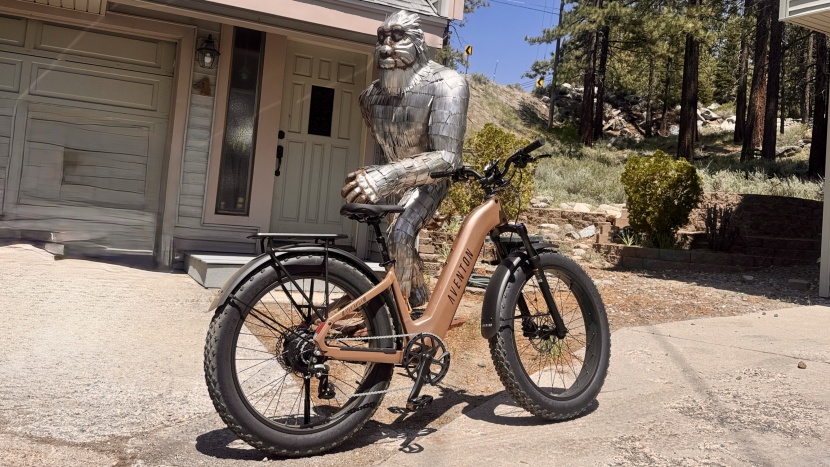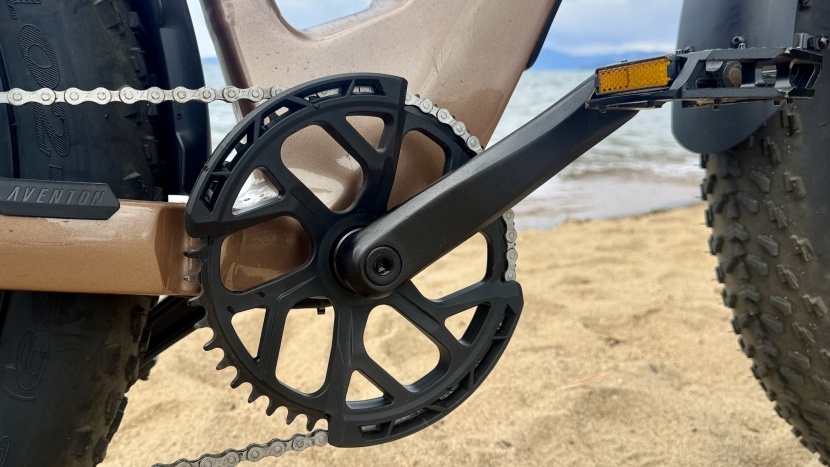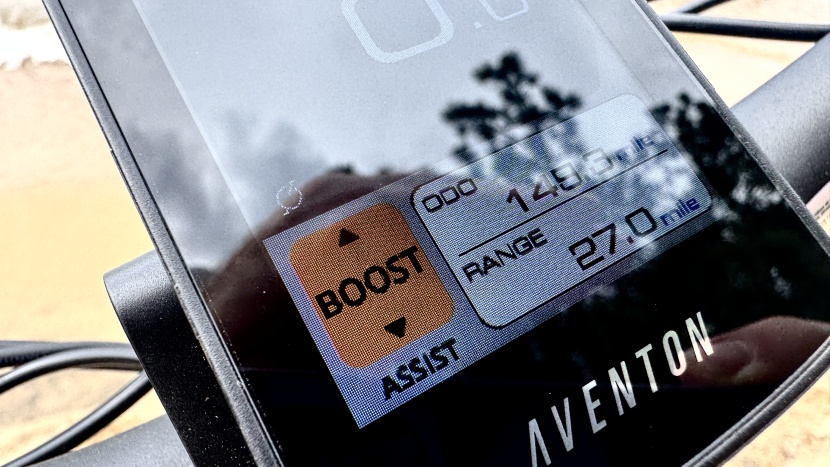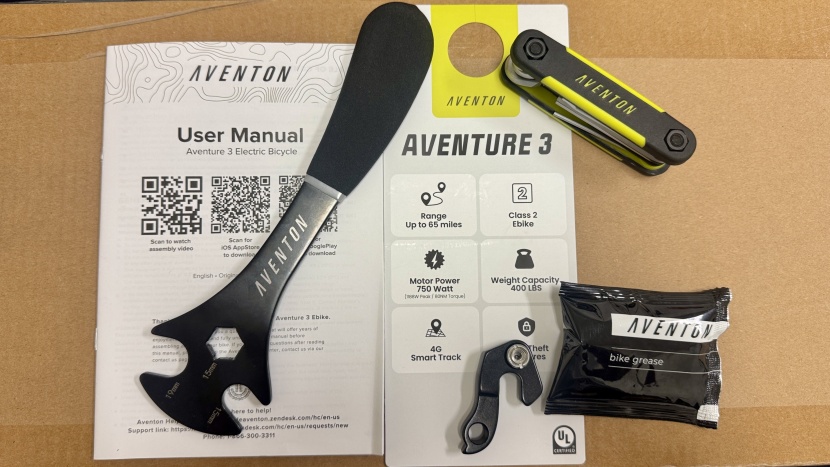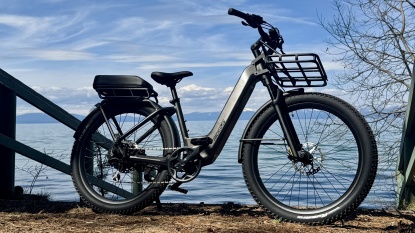
Our Verdict
Our Analysis and Test Results
Aventon has brought another level of tech to the electric bike market with its innovative ACU. The new Aventure.3 gets a host of technology that allows you to remotely lock, track, or geo-fence the bike. This fat-tire pleasure bike is ready to explore the paths, trails, and even the beach. With Aventon's newest 733Wh battery and proven 750W hub motor, the bike offers more range and power than you might expect.
Ride Quality
The Aventure.3 feels awesome! Climbing aboard this fat tire beast feels empowering, and peering over the front wheel, you feel like there's no terrain that you couldn't conquer. The 4-inch Innova tires provide considerable cushion between you and the road, while their soft casing and large knobs provide traction in spades. If you've never ridden a fat bike, the feeling is grin-inducing. An 80mm suspension fork and 50mm of suspension seatpost travel give you even more comfort on this bruiser of a bike.
The bike is available in two sizes and two frame styles. Our test bike is the Regular size with the step-through frame. The Regular size is recommended for riders with an inseam between 26 and 31", while the Large size is recommended for inseams between 31 and 35". Our bike had a step-over height of 18", making it super easy to get on and off of, even on an incline or off-road. There is little, if any, performance difference between the step-through and step-over frame styles, so we recommend most people go for the comfort option.
The bike uses an 80mm travel suspension fork with a bolt-on axle, not the stout thru-axle you find on the Aventure M. The fork can be locked out when you don't want its squishy comfort, but the suspension seatpost is not adjustable. The suspension on this bike is designed to enhance your comfort, unlike the suspension on a mountain bike, which is intended to improve traction. While traction isn't an issue under these tires, this isn't a mountain bike. Naming convention aside, you can ride off-road, and it's surprisingly adept on mixed surfaces, but it will show you its speed limit when the terrain gets too bumpy.
The bike is likely longer and heavier than whatever you're currently riding, which gives it stability and a planted feel. The Aventure.3, for all its adventurous intent, is less than sporty, and while the bike's power does a good job of masking its weight while accelerating or climbing, getting the front wheel off the ground or rapidly changing directions doesn't come naturally to the big bike. At lower speeds, a relaxed headtube angle gives the bike somewhat lethargic handling, but at moderately higher speeds, that geometry gives the bike composure and keeps it from feeling twitchy.
All frame sizes and styles have a 400-pound weight limit, and you can load up to 59 pounds on the included rear rack. The rear rack features low pannier mounts, allowing you to use pannier bags while also utilizing the top of the rack for a basket or strapping gear to its cross members. Those looking to haul even more can add an optional front rack. The bike comes with alloy fenders and built-in lighting, which we find less impressive. The alloy fenders are effective, but loud when riding off-road, as small bits of gravel tend to bounce around between them and the tire. The lighting package consists of a decent headlight and seatstay-integrated tail / brake lights with turn signals. The headlight isn't very bright, but it will help you to be seen. If you plan to ride after dark, you'll likely want additional lighting, and no plug-and-play upgrade is available, so you'll need a separate light and power source.
The Aventure.3 has a reasonably nice build that doesn't distract from your enjoyment of the ride. An 8-speed Shimano Altus drivetrain and Tektro hydraulic brakes don't exactly stand out, but they're reliable and perform well. Notably, the bike features brakes with motor cut-off switches, a feature that some manufacturers may be moving away from.
There are tradeoffs for the excellent ride quality, all-terrain capability, and power of the Aventure.3, and that is mostly its weight. At a hair over 79 pounds, the bike can be hard to move around and even harder to transport. There aren't many bike racks capable of carrying this bike, and even loading it into the back of a van or truck proved to be quite difficult. If your bike storage area is up a flight of stairs, you'll almost certainly want to look elsewhere.
Range
Packing the same 733Wh battery used in the Aventure M, we had relatively high expectations of the Aventure.3, but the bike also feels more powerful under throttle power. Our test rider was able to eek out 28.3 miles while climbing over 1300 feet on our test course, showing that it's less efficient than its mid-drive counterpart, but it's also far more enjoyable to ride under throttle power as the throttle is stronger and more responsive. Aventon's claimed range of “Up to 65 miles” is likely spot on if you add some leg power and choose less mountainous terrain.
The bike's range starts to look impressive when you consider that it's rolling on 4" wide knobby tires and weighs almost 80 pounds. The screen features a remaining range estimate that was surprisingly accurate, and the bike maintained full power until we got into the final 10% of its battery capacity.
Power
The Aventure.3 clocked the exact same power and torque as the previous Aventure.2, and that shouldn't be too surprising since the spec didn't change for the motor, battery, or controller. Kicking up 1130 watts at the rear wheel, we measured 42.2Nm of torque. If you're wondering what that means, this bike will impress most people with its acceleration and climbing capabilities. Using the throttle, we hit the maximum Class 2 speed of 20 mph in 7.8 seconds, which feels impressive when you're simply a passive rider.
Much has been written about the advantages of a torque sensor, which this bike uses, but it also has a cadence sensor, allowing you to switch between the two for a different experience. When riding with the torque sensor, the bike senses the power of your input and adds a proportional amount of power; it's smooth and seamless. When riding with the cadence sensor, the bike simply detects that the cranks are turning and pours on the power. If you're having a lazy ride down the bike path and simply want to feign pedaling while the bike does the work, switching to the cadence sensor makes that possible.
With Aventon's ACU, the bike receives over-the-air updates, and during testing, new features appeared. One of those features is cruise control, and it may sound gimmicky or inappropriate for an ebike, but we've been enjoying it for years on Lectric bikes and are delighted that Aventon was able to add it to their software package. To activate cruise control, you simply hold the right turn signal button for longer than one second while travelling at more than 6 mph, and the bike will take care of the rest. Disabling cruise control is as simple as touching a brake lever or pushing the button again.
A “BOOST” ride mode above Turbo was added, which is said to give the bike 20% more torque for 30 seconds. This update happened after our dyno test, so we haven't verified the claim, but Boost mode does feel significantly more powerful.
User Interface
Aventon has made the Aventure.3 even better by adding the BC280 display and all of the ACU functionality. Over-the-air updates, bike tracking, geo-fencing, and wireless locking are all available with the new high-tech module.
The bike uses a 5-button remote to adjust settings, use turn signals, and power the bike on. The remote can also be used for most of the ACU's functionality, but you'll have a better experience and more options by downloading the app and using your phone.
The display is centered in your line of sight and features clear, colorful graphics, with a USB-A port at the bottom for charging a phone. The battery no longer uses a key but is unlocked with a code via the screen or a button in the app. A 4-amp charger allows you to charge the battery in 5 hours on or off the bike; charging on the bike involves accessing the charge port on the lower part of the downtube. It's not the easiest spot to reach and puts the charge port in one of the dirtiest areas of the bike. I was concerned about water ingress, but Aventon gives the bike and its battery an IPX6 water resistance rating.
Ease of Assembly
Aventon uses excellent packaging for a consumer-direct brand. Our Aventure.3 arrived in this top-off style box that prevents you from having to lift the bike out of the box, and that's a good thing since our test bike weighed North of 79 pounds. Once the box top is removed, the lower portion of the box holds the bike upright, so you really don't need a bike stand.
Within a matter of minutes, 24 to be exact, we had our bike built and almost ready to ride. It's recommended to charge the battery to capacity and check the inflation of your tires before setting out on a maiden voyage. With clear instructions and included tools, almost anyone could build this bike. Aventon has a link to detailed instructions and an assembly video that will walk you through the steps if you're unsure of your mechanical aptitude. Major tasks involve installing the front wheel, handlebars, pedals, and headlight.
Should You Buy the Aventon Aventure3 Step-Through?
If you're sold on the merits of a fat-tired e-bike, you'll be hard pressed to do better than the Aventure.3. We loved the Aventure.2, and this bike builds on the strengths of that bike. The Aventon Control Unit provides some useful features that provide security and peace of mind, but know that it will cost you $20 per year for connectivity. This bike is incredibly comfortable on almost any type of terrain, and it has the power to get you over it and enough battery life that you'll probably get tired before the bike does. Our main reservation with this bike, and it stands for most of our Class 3 bikes, is that they're quite heavy. You're unlikely to notice this while riding, but transporting this bike will be challenging.
What Other E-Bikes Should You Consider?
This is a great all-terrain e-bike, and these bikes are becoming popular for good reason. If you want something a little less expensive, the Lectric XPeak 2.0 has a similar feel without the bells and whistles for a few hundred dollars less. If you want something a bit more versatile, take a look at the Segway Xafari, it uses slightly smaller tires but has even more range and power for a very similar price. The Xafari is also built on a full-suspension frame, giving it additional comfort over rough terrain.


